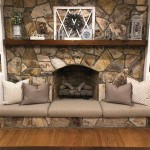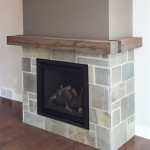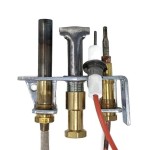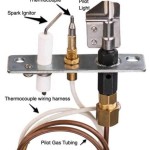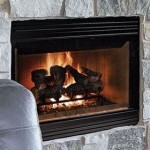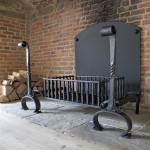Best Stone for Fireplace: A Comprehensive Guide
Selecting the appropriate stone for a fireplace is a crucial decision impacting both the aesthetic appeal and the functional performance of the hearth. The following guide details various options, exploring their properties, advantages, and considerations for integration into a fireplace design. Factors such as heat resistance, durability, visual characteristics, and budget considerations all play a significant role in determining the optimal stone choice.
The fireplace, as a central architectural element of a home, often serves as a focal point around which living spaces are organized. The materials used in its construction, particularly the stone facing, contribute significantly to the overall ambiance and style of the room. Careful planning and selection are essential to ensuring a harmonious and long-lasting design.
Heat Resistance and Durability
One of the primary considerations when selecting stone for a fireplace is its ability to withstand high temperatures and thermal stress. The repeated heating and cooling cycles that a fireplace experiences can cause certain materials to crack, crumble, or discolor over time. Therefore, selecting a stone with inherent heat resistance is paramount to ensuring the longevity and safety of the fireplace structure. Furthermore, the stone's durability, its resistance to physical impact and wear, is also crucial, particularly in high-traffic areas or environments prone to accidental collisions.
Granite, for instance, is a popular choice due to its exceptional heat resistance and durability. Formed deep within the earth under intense pressure and heat, granite is composed of tightly interlocking mineral grains, resulting in a dense and robust material. Its resistance to scratching, staining, and chipping makes it a particularly suitable option for fireplaces that are used frequently. Basalt, another igneous rock, shares similar characteristics with granite in terms of heat resistance and durability. Its dark, almost black appearance can provide a striking contrast in a light-colored room.
Soapstone is another frequently recommended option. Its high density and unique mineral composition give it excellent heat retention properties. This characteristic means that soapstone retains heat for a longer period and radiates warmth even after the fire has died down. This efficiency makes it an energy-conscious choice for those seeking to maximize the heating potential of their fireplace. Likewise, the softness of soapstone allows for relatively easy shaping and carving. Its heat resistance stems from its high talc content, which also gives it a smooth, soapy feel.
Certain types of marble, while aesthetically pleasing, may not be the most practical choice for high-heat areas of a fireplace. While marble can withstand some heat, it is relatively porous and susceptible to staining and discoloration from soot and other combustion byproducts. If marble is desired, it is crucial to select a dense, non-porous variety and apply a sealant to protect its surface.
Aesthetic Considerations and Design Styles
The aesthetic appeal of the stone is just as important as its functional properties. The color, texture, and pattern of the stone can significantly impact the overall look and feel of the room. Stone is available in a wide array of colors, ranging from light creams and beiges to dark grays and blacks, and everything in between. The texture can vary from smooth and polished to rough and rugged, allowing for a diverse range of design possibilities. The choice will be directly influenced by the desired style of the fireplace, whether it is traditional, contemporary, rustic, or modern.
For a classic and elegant look, marble and limestone are often preferred. Marble, with its distinctive veining and polished surface, exudes sophistication and luxury. Limestone, with its softer tones and more subtle texture, offers a more understated elegance. Both materials can be used to create intricate designs and detailed carvings, adding a touch of artistry to the fireplace. Furthermore, both materials are available in varying shades of whites and creams making them suitable for traditional designs.
For a more rustic and natural aesthetic, fieldstone and river rock are popular choices. Fieldstone, gathered from fields and quarries, has a rough and irregular texture that evokes the charm of the countryside. River rock, smoothed and rounded by the natural action of water, offers a similar aesthetic with a more refined appearance. These materials are particularly suited for creating a fireplace that seamlessly blends with its natural surroundings. The use of these stones leans toward designs suitable for cabin or cottage-style homes.
In contemporary and modern designs, sleek and minimalist stones such as slate and quartzite are often favored. Slate, with its dark, flat surface, provides a clean and sophisticated look. Quartzite, with its crystalline structure and subtle sparkle, adds a touch of elegance and visual interest. These materials can be used to create a fireplace that is both functional and visually striking. These designs allow for linear fireplaces which can be installed for heating spaces.
The cut and shape of the stone also influence the overall aesthetic. Stones can be cut into regular shapes, such as squares and rectangles, for a more formal and structured look. Alternatively, they can be left in their natural, irregular shapes for a more organic and free-flowing aesthetic. The size of the stones can also vary, from small pebbles to large boulders, depending on the desired scale and proportion of the fireplace.
Cost and Installation Considerations
The cost of the stone is an important factor to consider when planning a fireplace project. The price of stone can vary significantly depending on the type of stone, its quality, and its availability. Rare or exotic stones will typically be more expensive than common or locally sourced stones. The cost of transporting the stone can also add to the overall expense, particularly if the stone is sourced from a distant location.
Granite and marble are generally among the more expensive stone options, while fieldstone and river rock are typically more affordable. Soapstone falls somewhere in between, depending on its quality and availability. The price of slate and quartzite can also vary depending on their grade and source. While sourcing the stone, it is important to find stone options that also suits your budget.
The installation of the stone is another important consideration. While some homeowners may attempt to install the stone themselves, it is generally recommended to hire a professional mason or contractor. The installation of stone requires specialized skills and knowledge to ensure that the fireplace is structurally sound and aesthetically pleasing. A professional installer will be able to properly cut, shape, and secure the stones, as well as ensure that the fireplace meets all applicable building codes and safety standards.
The complexity of the design will also impact the installation cost. A simple fireplace with a straightforward design will typically be less expensive to install than a complex fireplace with intricate details and custom features. The size of the fireplace will also affect the installation cost, as a larger fireplace will require more materials and labor.
Furthermore, it is important to consider the cost of maintenance when selecting stone for a fireplace. Some stones, such as marble and limestone, are more porous and susceptible to staining than others. These stones may require periodic sealing and cleaning to maintain their appearance. Other stones, such as granite and slate, are more resistant to staining and require less maintenance.
In conclusion, selecting the best stone for a fireplace involves a careful consideration of several factors, including heat resistance, durability, aesthetic appeal, cost, and installation considerations. By carefully weighing these factors, homeowners can choose a stone that will enhance the beauty and functionality of their fireplace for years to come.

Why Natural Stone Is The Best Choice For Your Fireplace

65 Best Stone Fireplace Design Ideas To Ignite Your Decor Designs Home Farmhouse

How To Pick The Best Stone For Fireplaces Stoneworx

Dk Studio

Stone For Fireplaces What Are The Best Options In 2024 Marble Com

Best Stone Fireplace Ideas

50 Sensational Stone Fireplaces To Warm Your Senses

Natural Stone Is The Best Choice For Your Fireplace Carmel Imports
:strip_icc()/Screenshot2021-10-19at09-16-46Portfolio-AmyBartlamPhotography-1f35ea9ec29846779a2d62b42676eff9.png?strip=all)
20 Best Stone Fireplace Ideas

Blog Updated Choosing The Best Natural Stone Fireplaces
Related Posts


